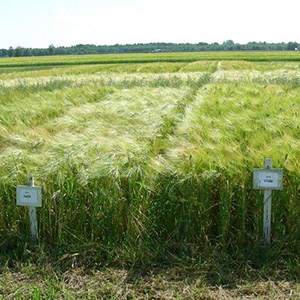Contact
Department of Crop Production Ecology, Crop production science
Department of Crop Production Ecology, Crop production science

Barley is an important crop in Sweden, as it represents approximately 30 percent of the total grain harvest of the country. Barley is especially important in Northern Sweden, where it is the second most cultivated crop after leys.
There is a large variability in yield of barley, between farms, between the fields of the same farm, and within fields. The barley yield can be largely affected by various factors due to high latitude specific weather conditions (e.g. short growing seasons with very long days, low temperatures, early or late frost risks, etc.), along with more generic limiting factors such as inappropriate nitrogen levels, soil compaction, etc.
Remote sensing techniques rely on the interaction of light with vegetation features, such as the canopy chlorophyll content or the accumulated biomass. Satellite and drone remote sensing can be used to monitor and compare the performances of crops both between and within fields. Using appropriate modelling tools, such as spatialized statistical models or crop models, remote sensing-derived information can help to formulate hypotheses on the underlying factors which are responsible for the variability in performance.
Using the experimental farm of Röbäcksdalen as a case study, the objectives of this project are to:
This project, if successful, could supply the farmers in Northern Sweden a guideline to understand the main factors responsible for low yield and provide a knowledge basis for adaptation strategies. Satellite-based models developed in this project could be included in the open access web-based CropSAT platform, making decision supporting results available on demand for farmers. Hopefully this would directly result in increased barley yield, and by extension, in better economic performances for barley producers in Northern Sweden.
The project is funded by the Regional Foundation for Agricultural Research in Northern Sweden (Regional jordbruksforskning för norra Sverige; RJN)